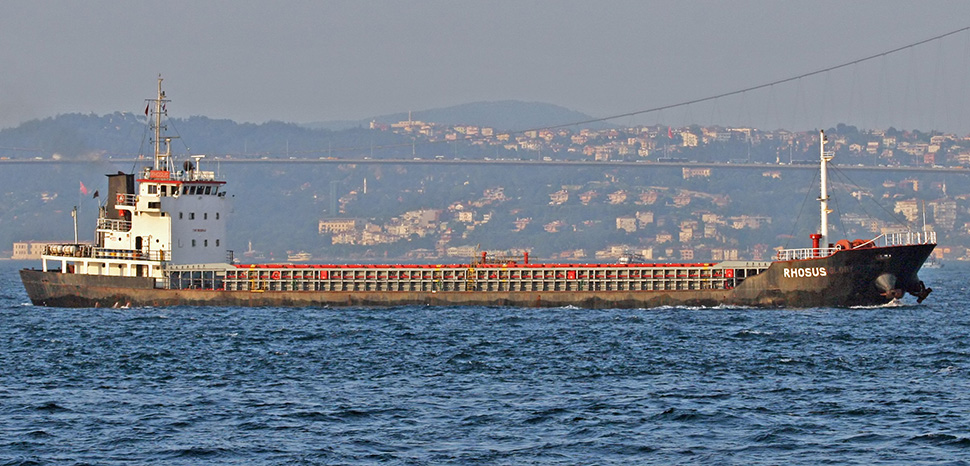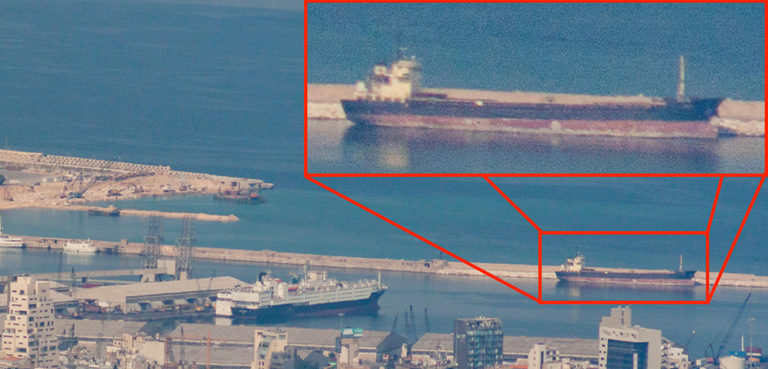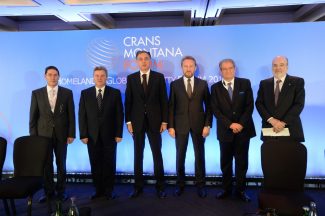Two notable foreign official investigations were also launched into the explosion but reportedly reached no conclusive findings about the cause. Several Lebanese politicians and officials called for an international investigation following the port explosion. As per statements by Lebanese officials, Lebanon does not have the technical capacity to investigate at such a scale.
- On August 5, 2020, French police and prosecutors commenced an inquiry into the explosion, citing applicable jurisdiction to investigate French victims among the people injured. However, their findings to date were not made public. According to media reports, the French investigators reached no conclusion about the cause of the blast.
- The United States Federal Bureau of Investigation (FBI) also joined the probe into the blast. According to media reports, the FBI did not arrive at a firm conclusion about what caused the explosion, and their findings were not made public. Reportedly, the FBI concluded that only 20 percent of the Rhosus’ ammonium nitrate load exploded.
Early Investigative Research
While the official investigation was at an early stage, several early findings about the port explosion were available to the public, mostly from investigations conducted by media and research organizations engaged in investigative work. Barely a few days after the explosion, early but compelling investigations gathered information and revealed evidence based on documents that would prove decisive for subsequent investigations.
Al Jadeed Investigative Unit
The earliest local investigation into the explosion that became public was conducted by the Lebanese television station Al Jadeed’s investigative unit, mainly by the well-known Lebanese investigative journalists Riad Kobeissi and Layal Bou Moussa. The team gathered official documents and evidence from various sources, including officials, judges, state lawyers, and experts, and their investigative reporting would later serve as a base for other more comprehensive investigations.
Kobeissi and Bou Moussa presented their findings live on TV for almost an hour-long episode. They discussed the administrative responsibilities of ministry officials and representatives who were allegedly involved in handling the ammonium nitrate cargo’s arrival at Beirut port, presenting correspondence to and from officials and representatives at various bodies of the Lebanese Ministry of Public Works and Transport, the Ministry of Justice, and the Lebanese judiciary. Officials were reportedly warned about the gravity of the threat posed by the explosive material before and after it was offloaded at the warehouse. Included among the many aberrations the journalists claimed in this episode pertaining to the ammonium nitrate cargo handling, based on an analysis of the obtained documents, are the following:
- After its arrival, it took almost four months to offload the cargo at the port.
- The cargo was offloaded based on inaccurate information in the customs paperwork.
- A series of urgent letters were sent to judges warning officials about the threat posed by the ammonium nitrate cargo.
- An internal investigation was conducted by the customs administration that found customs and security officials had mischaracterized the explosive classification by concluding that ammonium nitrate is not a prohibited chemical.
- The description of “urgent matters” that were first inscribed as letter headers sent to the urgent matter judge disappeared after the cargo was offloaded.
- The letters did not accurately describe the gravity of the danger posed by the ammonium nitrate cargo to the Case Authority.
- From 2014 to 2017, no correspondence was submitted by the concerned ministries to the Case Authority mentioning the ammonium nitrate cargo.
- The incongruity between the various standard customs paperwork involving the description of the cargo, like the bill of lading and the unified list, and the absence of the ship manifest form.
- The exclusion of a cargo description on the unified list prepared by the manifest department at the general directorate of customs was deemed a customs violation. However, the violation was excused following several referrals between port and security officials.
- A decision was made in 2018 by the Lebanese state; however, the second expert appointed by the enforcement department, following several attempts and obstructions, could not enter the port and examine the cargo until February 2020. He said he was shocked by the negligence and inadequate safety measures involving storing the ammonium nitrate and produced photos of torn bags of the explosive material. The expert could not deliver an evaluation as he was not provided an inventory of the goods.
- The photos and attestation provided by the expert identified a sizeable box stored next to the ammonium nitrate in the warehouse, but customs staff did not permit the expert to examine it.
Organized Crime and Corruption Report Project Investigations
A cross-border investigation by the Sarajevo-based investigative media organization Organized Crime and Corruption Report Project (OCCRP) was published only a few days after the Beirut port explosion. The report aimed to investigate the circumstances surrounding the arrival of the Rhosus at Beirut port, the ship that carried the deadly explosive ammonium nitrate. OCCRP’s investigation’s early findings have been cited in several reports, along with lawsuits pertaining the Beirut port explosion.
OCCRP’s investigation, primarily through analyzing a complex and opaque combination of offshore documents, identified substantial information about the Rhosus’ ownership and operation and the cargo’s customer and other actors involved in the shipment operation, raising questions about the Rhosus’ mysterious arrival at the port.
According to OCCRP, while most of the media reports and government authorities identified Russian national Igor Grechushkin as the Rhosus’ owner and respectively probed his role in the Lebanon explosion, the true owner of the ship was Charalambos Manoli, a Cypriot shipping executive and entrepreneur with a questionable background. OCCRP reported that Manoli owned the Rhosus through his Panama-registered company Briarwood Corporation and was behind a complex network of companies involving the Rhosus, including owning, registering, licensing, and running the ship. According to OCCRP, three of Manoli’s companies helped run the Rhosus.
OCCRP concluded that Grechushkin was merely the Rhosus’ operator at the time of its final voyage to Lebanon. According to documents obtained by OCCRP, Grechushkin, through his Marshall Islands-registered company Teto Shipping Ltd., chartered the Rhosus from Briarwood Corporation. Manoli reportedly denied owning the Rhosus and claimed he transferred the ownership from Briarwood Corporation to Teto Shipping in August 2013, before the Rhosus’ trip to Lebanon.
Based on OCCRP’s report, below is a chart illustrating Manoli and Grechushkin’s involvement with the Rhosus:

According to OCCRP, Manoli also maintained a relationship with the Lebanese-owned FBME Bank Ltd. that was under US sanctions over allegations of money laundering. Manoli was reportedly indebted to FBME Bank Ltd. and, at some point, offered the Rhosus as collateral.
However, OCCRP’s investigation highlighted other controversial actors’ alleged involvement in the shipment operation, including the customer who ordered the ammonium nitrate cargo and the shipment’s “intermediary.”
- According to OCCRP, the customer who ordered the shipment was Fabrica de Explosivos de Mocambique (FEM), a Mozambican explosives manufacturing company with ties to Mozambique’s ruling political and military elite. FEM is reportedly 95 percent owned by a Portuguese company that was investigated for illicit arms trafficking and supplying explosives to terrorists.
- OCCRP reported that the intermediary shipment buyer was United Kingdom-registered trading firm Savaro Ltd. According to OCCRP, Savaro Ltd. was a dormant entity when it ordered the cargo and is linked to a Ukrainian-registered company with the same name run by Ukrainian businessman Vladimir Verbonol.
Bellingcat’s Visual Investigation
Just a few hours after the explosion, analyst Nick Waters at Amsterdam-based open-source investigation outlet Bellingcat expeditiously produced an elaborative visual analysis of the explosion and formulated a conclusion. Bellingcat is known for using open-source tools and digital data to investigate crimes and conflicts worldwide.
Water presented visual evidence, comprising a sequence of images and videos uploaded on Twitter/ YouTube together with imagery taken by satellites showing the fire, the small explosions, and the massive detonation. Waters concluded that an initial fire and a subsequent series of smaller explosions “set off” the massive detonation that ripped through Beirut city.
Waters successfully identified the location of the epicenter of the explosion by utilizing satellite imagery, uploading social media videos, and comparing these images of the port warehouses with Google Maps.
Waters also deployed a visual analysis by comparing a photo shared by several social media accounts showing large sacks of ammonium nitrate with satellite imagery of the claimed warehouse and confirmed its likely authenticity. He indicated this was the shipment that detonated in a Beirut port warehouse, thus excluding the theory of a nuclear explosion that was initially circulated by several sources.
In concluding his visual analysis, Waters indicated that the cause of the explosion was likely the detonation of 2,700 tons of ammonium nitrate that was sitting in the port warehouses, as was cited then by multiple sources, media reports, and official statements.
In a matter of days, on August 7, Waters published a second investigation refuting several allegations about what caused the explosion as misinformation and falsehood. Several fake images and videos had started emerging online. He similarly deployed a visual analysis of videos and imagery to demonstrate deception, for example, dissecting and exposing fake videos of the explosion falsely showing missiles flying over the port and pointing out the misperception of some sounds and objects appearing in the videos and mistakenly believed to be the sounds of a jet in the port’s surroundings.
**This article is second in a three-part series examining the Beirut port explosion:
Part one examining domestic investigations can be found here.
Part three examining later international investigations and lawsuits can be found here.
Rany Ballout is a Director at Hilton Global Associates, a global risk management firm specializing in investigative due diligence and actionable intelligence. He is a political risk and due diligence analyst with extensive experience in the Middle East. He holds a Master’s degree in International Studies from the University of Montreal in Canada and a bachelor’s degree in Linguistics from Uppsala University in Sweden.




